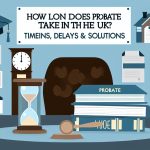Table of Contents

Key Takeaways
- A Home Trust can protect your property and ensure it’s passed on to your loved ones.
- There are different types of trusts, and choosing the right one depends on your needs.
- Establishing a trust involves selecting a type, drafting the trust deed, and choosing a trustee.
- Regularly updating your trust is essential to reflect changes in your life and the law.
- Avoid common mistakes by understanding the legal requirements and seeking professional advice.
Your Family’s Future: Why Home Trust Strategies Matter
Let’s talk about securing your family’s future. It’s about more than just making sure they have a roof over their heads; it’s about protecting that roof and everything under it for years to come. That’s where home trust strategies come into play. They’re like a safety net for your property, ensuring that no matter what life throws your way, your home can remain a sanctuary for your loved ones.
So, why should you listen to me? Well, I’ve been in the trenches of estate planning, helping families like yours navigate the complex world of trusts. I’ll guide you through what you need to do to secure your legacy, and rest assured, I’ll make it as simple as possible.
What Is a Home Trust and How Can It Protect Your Property?
A Home Trust is a legal arrangement that gives you the power to safeguard your property. Think of it as putting your home in a protective bubble. Once inside, your property is shielded from certain risks, like creditors or legal battles that might arise after you’re gone. And the best part? You can still enjoy your home while you’re here, knowing it’s secure for the future.
The Importance of Estate Planning for Your Peace of Mind
Now, estate planning might sound daunting, but it’s all about peace of mind. It’s the comfort of knowing that whatever happens, your wishes for your home and assets are clear and enforceable. And when it comes to peace of mind, there’s nothing quite like the certainty a Home Trust can provide.
Remember, this isn’t just about you. It’s about your family, your children, and their children. A well-set-up trust ensures that your home, often your most significant asset, is managed exactly how you want it to be, even when you’re not around to oversee it.
Cracking the Code: Types of Home Trusts in the UK
So, you’re ready to take the plunge, but where do you start? Let’s break down the types of trusts available in the UK. Each type serves a different purpose, and the right one for you will depend on your personal circumstances.
Revocable vs Irrevocable Trusts: Choosing What’s Best for You
First up, we have revocable and irrevocable trusts. A revocable trust is like a safety net you can adjust or even remove if you change your mind. It offers flexibility but less protection from creditors.
An irrevocable trust, on the other hand, is like locking your assets in a vault. Once it’s set, you can’t just change your mind. It offers stronger protection but less control. The choice between the two boils down to a trade-off between flexibility and security.
Because this is an important decision, let’s put it in perspective: understanding the ins and outs of UK home trust strategies is crucial for securing your legacy.
| Revocable Trust | Irrevocable Trust |
|---|---|
| You retain control and can make changes. | Changes are not allowed once established. |
| Less protection from creditors and estate taxes. | Greater protection from creditors and may offer tax benefits. |
| Can be revoked or dissolved if needed. | Permanent and binding to provide long-term protection. |
Understanding Property Trusts: The Tool for Asset Protection
Property trusts are specifically designed to protect real estate assets. They can be used to manage how your home is used after you pass away, or to control who benefits from the property and when. This is crucial if you want to ensure that your home stays within the family or is used in a way that aligns with your values.
Now, let’s take a quick breath. That was a lot to take in, right? But hang in there, because this is the foundation of ensuring your family’s financial security.
The Nuts and Bolts: Setting Up Your Home Trust
Getting your trust set up is like building a house. You need a solid blueprint, the right materials, and a trustworthy team. Here’s how you lay the groundwork:
Step-by-Step Guide to Establishing a Trust
- Decide on the type of trust that fits your needs.
- Gather all necessary documents related to your property.
- Consult with an estate planning attorney to draft your trust deed.
- Appoint a trustee—this is the person who will manage your trust.
- Transfer the legal title of your home to the trust.
Choosing the right type of trust is the first step. Then, you’ll need to gather all the paperwork that proves you own your home. After that, you’ll need a good lawyer who specializes in estate planning to put your wishes down on paper. That document is called a trust deed, and it’s the heart of your Home Trust.
Selecting the Trustee: Who Holds the Key to Your Estate?
Choosing a trustee is like choosing a captain for your ship. They need to be trustworthy and competent, as they’ll be steering your estate when you’re not around. You can choose a family member, a friend, or even a professional trustee. Just make sure they understand your wishes and are willing to carry them out.
Now, that’s part one of our journey through the world of UK Home Trust Strategies. Stick with me, and by the end, you’ll be ready to secure your legacy with confidence.
Maintaining Control: How to Manage Your Home Trust
Once you’ve set up your trust, the next step is to manage it effectively. This involves overseeing the trust’s administration and ensuring it aligns with your original intentions. It’s a bit like gardening; you plant the seeds (set up the trust), but you need to water and tend to it to make sure it grows the way you want it to. For a comprehensive guide on this process, consider reading our property protection trust management toolkit.
Retaining Limited Access While Protecting Assets
Even after transferring your home into a trust, you can retain some level of access and use. This is usually structured through the trust deed, which can specify your right to live in the property, for example. But remember, the more control you retain, the less protection the trust may offer from creditors or in terms of tax benefits. It’s about finding the right balance for your situation.
Here’s an example to illustrate this: UK home trust strategies.
For instance, if you’ve put your home into a revocable trust, you might have the right to rent it out and collect the income. But if the trust is irrevocable, those rights would likely be held by the trustee.
When it comes to managing the trust, you’ll want to make sure that any income or expenses related to the property are handled through the trust’s accounts to maintain clear records and ensure the trust’s integrity.
Updating Your Trust: When and Why?
Life is full of changes—marriages, births, divorces, and deaths. These events can all affect your trust, which is why it’s important to review it regularly. Think of your trust as a living document; it should evolve as your life does.
Most importantly, you should update your trust when there are significant changes in your family structure, like a new child or grandchild, or if you acquire new assets that you want to include. Also, keep an eye on changes in the law, which might affect the benefits or duties associated with your trust.
Avoiding Pitfalls: Common Mistakes in Trust Creation
- Not choosing the right type of trust for your situation.
- Failing to transfer all necessary property titles into the trust.
- Neglecting to regularly review and update the trust.
- Choosing an unsuitable trustee.
- Not understanding the tax implications of your trust.
Creating a trust can be straightforward, but there are pitfalls to avoid. One common mistake is not properly transferring the title of your home into the trust, which can lead to issues down the line. Another is failing to choose the right trustee—this person will have significant control over your property, so it’s vital to pick someone who is both trustworthy and capable.
Legal Landmines to Steer Clear of
When setting up a trust, it’s crucial to navigate around legal landmines. For instance, if the trust is seen as a way to avoid creditors dishonestly, it could be challenged and potentially overturned. Therefore, you need to set up the trust with clear and legitimate intentions.
Additionally, if the trust isn’t set up correctly, it could be deemed invalid. This is why it’s essential to work with an experienced estate planning attorney who knows the ins and outs of trust law.
Estate Planning Misconceptions That Could Cost You
There are plenty of myths out there about estate planning. Some people think they don’t need a trust because they aren’t wealthy enough, but this isn’t about how much you have; it’s about protecting what you do have. Others believe that a will is enough to protect their assets, but wills go through probate, which can be a lengthy and public process.
Here’s the bottom line: a trust can offer more privacy and efficiency in transferring your assets than a will alone. So, don’t fall for the misconceptions—get informed and take action.
Success in Stories: Real Benefits of a Trust
Let’s look at some real-life examples of how a trust can be beneficial. These stories show that, when done right, a trust can be a powerful tool for asset protection and family financial security.
For example, after the passing of a homeowner, their property was tied up in probate court for months due to a contested will. However, their neighbor, who had a similar estate but had set up a trust, passed away around the same time. The neighbor’s home was quickly and efficiently transferred to their beneficiaries without any court involvement, thanks to the trust.
This story highlights the stark difference a trust can make in ensuring a smooth transition of assets. It’s not just about avoiding probate; it’s about the peace of mind that comes with knowing your estate is secure.
In another case, a family was able to significantly reduce their inheritance tax liability by placing their property in a trust. This strategic move ensured that more of their wealth was passed on to their children, rather than going to tax payments.
These examples show that trusts are not just for the ultra-wealthy. They’re a practical tool for anyone looking to protect their assets and ensure their family’s financial security.
FAQ: Navigating Your Legacy Planning
What Happens to Your Home Trust if You Move?
If you move, the trust can be designed to allow for the sale of the home and the purchase of a new one within the trust. The key is to structure the trust so it has the flexibility to adapt to such life changes without compromising the protection it provides
Can a Home Trust Help Lower Inheritance Taxes?
Yes, in some cases, placing your home in a trust can lower the inheritance tax burden on your estate. This works by removing the home’s value from your estate’s total worth, potentially bringing it below the threshold for inheritance tax. However, tax laws are complex and frequently change, so it’s crucial to get current advice from a tax specialist.
Let’s break this down:
If your estate is above the £325,000 threshold, it could be subject to inheritance tax.
By placing your home in a trust, you might reduce your estate’s value below that threshold.
It’s essential to consider the seven-year rule for gifts when setting up a trust for tax purposes.
Remember: Tax planning is a complex area, and it’s essential to get it right. Consult a professional to ensure your trust is set up in a tax-efficient manner.
Is It Possible to Sell a Home Held in a Trust?
Yes, a home held in a trust can be sold, but the process involves the trustee managing the sale rather than you doing it directly. The proceeds from the sale can then be held within the trust or used to purchase a new property, depending on the trust’s terms
How Can You Change the Terms of a Home Trust?
If you’ve set up a revocable trust, you can change its terms at any time. For an irrevocable trust, changes are more difficult and usually require the agreement of all beneficiaries or a court order. The key is to ensure that any changes are made legally and in line with the trust’s objectives.
What Are the Responsibilities of a Trustee?
The trustee has a fiduciary duty to manage the trust in the best interests of the beneficiaries. This includes maintaining the property, investing the trust’s assets wisely, and following the terms set out in the trust deed. It’s a significant responsibility, and choosing the right trustee is crucial for the trust’s success.
Here’s a quick rundown of a trustee’s responsibilities:
Acting in the beneficiaries’ best interests at all times.
Managing and investing the trust’s assets prudently.
Keeping accurate records and reporting to beneficiaries as required.
Adhering to the terms of the trust deed.






